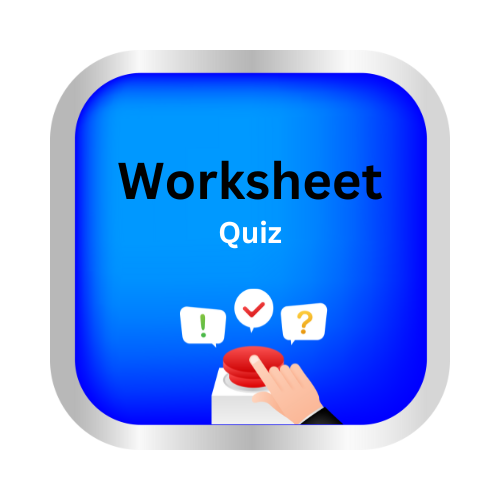Introduction
Key Notes :
What is Electricity?
- Electricity is a form of energy that flows through conductors (wires) and powers devices like lights, fans, and computers.
- It is created by the movement of tiny particles called electrons. Electrons flow through materials such as copper, which are called conductors.
Basic Terms
- Current: The flow of electric charge through a conductor. It is measured in amperes (A).
- Voltage: The force that pushes electrons through a conductor. It is measured in volts (V).
- Resistance: The opposition to the flow of current. It is measured in ohms (Ω).
Components of an Electric Circuit
- Battery: Provides electrical energy to the circuit.
- Wire: A conductor that connects all parts of the circuit, allowing electricity to flow.
- Switch: A device used to open or close the circuit, controlling the flow of electricity.
- Bulb: A device that uses electricity to produce light.
- Resistor: A component that limits or controls the flow of current.
Types of Electric Circuits
- Series Circuit: In a series circuit, components are connected end-to-end, so the current flows through each component one after the other.
- Parallel Circuit: In a parallel circuit, components are connected across common points, and the current can flow through multiple paths at the same time.
How a Circuit Works
- Electricity flows from the positive end of the battery, travels through the wires, and powers devices (like bulbs).
- A closed circuit allows the current to flow, while an open circuit (with a broken or turned-off switch) stops the flow of electricity.
Important Concepts
Conductor vs. Insulator: Materials like metals (copper, aluminum) are conductors of electricity, while materials like rubber, plastic, and wood are insulators, preventing the flow of electricity.
Circuit Diagram: A simplified, symbolic way of representing an electric circuit. Common symbols include:
- Battery: Long and short parallel lines.
- Bulb: A circle with an “X” inside.
- Wire: A straight line.
Safety in Electricity
- Never handle electrical appliances with wet hands.
- Use insulated wires to avoid electric shocks.
- Always turn off electricity when working with circuits.
Let’s practice!

